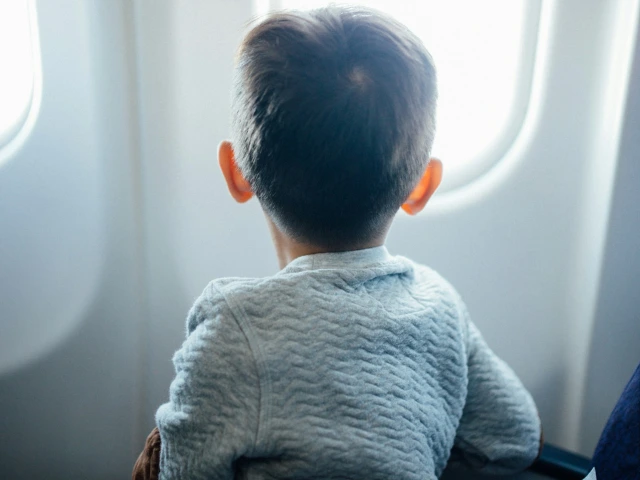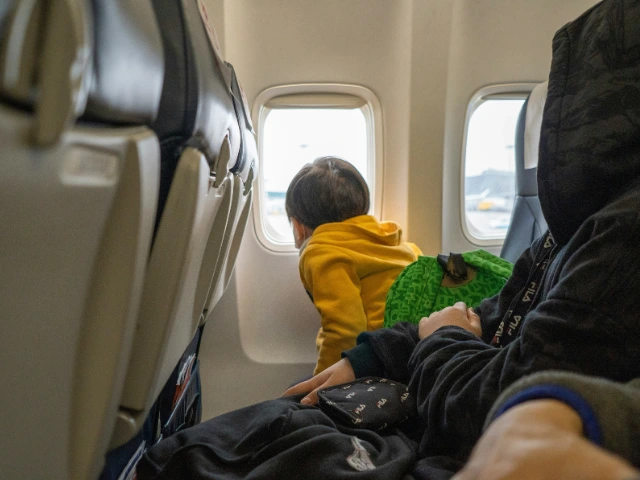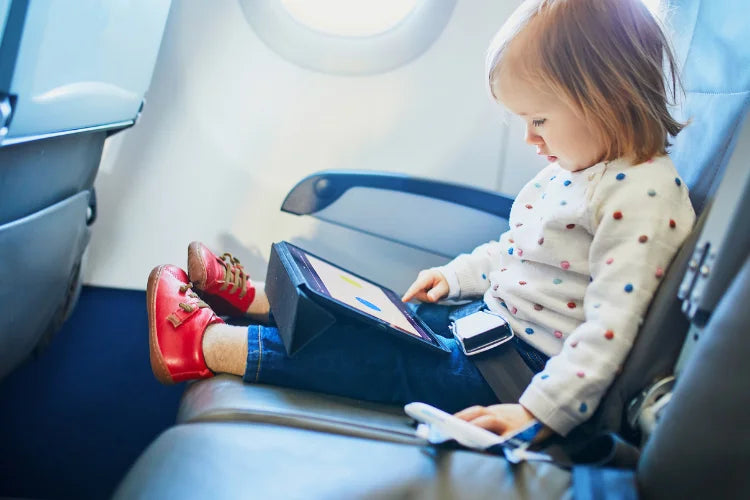How does air travel work with a baby? For many new parents, this question has been a source of excitement and some reasonable frustration—or both. But make no mistake, flying with your toddler is a momentous event. It shouldn't also cause you too much trouble if you can boost your preparation with our parenting checklist below.
Common Challenges When Flying with a Stroller
Traveling with a stroller for the first time requires more preparation than you might be used to. But with careful planning, you might just pull it off without a hitch.
On that note, let's look at some common challenges you might encounter during or even before your flight.
-
Size restrictions
-
Airline policies on strollers vary
-
Check-in options may be limited
-
Transporting car seats and strollers
Airlines tend to have favorable policies for strollers and car seats. In some cases, if your stroller folds down to a size that fits in the overhead compartment, airlines will count it as carry-on baggage. But for the most part, strollers may be gate-checked and need to be retrieved upon deplaning. If flying alone, it's a ho-hum process, but not so much with a toddler.

Tip 1: Label your stroller
Apart from the risk of getting damaged, strollers that are left with baggage face the risk of being lost during the transition. The least you can do is label the stroller with your contact details in case it gets mixed up or lost. However, depending on which airport you land in, do note that strollers are one of the last items to arrive at the baggage claim, so you'll be waiting for a while regardless.
With that said, the best decision you can make to avoid being caught up worrying about various airline policies and boarding plans is to simply invest in a carry-on stroller upfront. This refers to a stroller that meets most airline policies for fitting into the overhead cabin.
Top of the list? The TernX hand luggage pram. But this travel gear isn't just a stroller, it's also a piece of stylish luggage. If you're traveling light, then it's essentially all you need. If it's a long trip ahead, here's your extra storage—win-win!
Tip 2: Decide whether you are bringing your stroller onboard or gate-checking your stroller
Free checking of strollers, car seats, and other baby items is allowed by many carriers. This means these items will not count against the regular baggage limit for families traveling with small children.
However, you'll still have to decide (or check) whether you will bring your stroller onboard or have it checked at the gate. This is granted that you have a stroller that qualifies as a carry-on like the TernX stroller.
Additionally, storing it in the cabin should greatly minimize the risk of your equipment getting damaged. It also allows for a quicker exit since you won't have to stay for an indefinite amount of time at the baggage claim.
Tip 3: Going through security with your travel stroller
If you don't have an airline-approved stroller that you can bring onboard, you can use a standard pram around the airport up until gate-check. Additionally, standard prams may not fit through the x-ray machine, making security checks more difficult. On top of that, you’ll need to empty everything from the underseat basket before folding it up, which can be time-consuming and inconvenient.
In contrast, the TernX travel stroller folds quickly and smoothly, and it can be scanned directly with its luggage—saving you valuable time during boarding.
Additional Tips for Flying with Kids
Plan for motion and ear sickness
Children are susceptible to ear and motion sickness during air travel. Apart from this, it's best to account for the possibility of children getting sick on vacation. For motion sickness, you can try over the counter medicines for children. You may also consult with your pediatrician before making further travel arrangements via plane and motor vehicle.
Organize your travel documents
Here's a quick checklist of documents and identifications that you might need for your trip.
-
Birth certificate - Infants are required to have their birth certificate with them during air travel.
-
Passport - International destinations require passports from all travelers, including the kids.
-
Physician's note - Some airline policies require a medical form for traveling infants.
-
Parental consent letter - Strictly required if the child is traveling without their parents or legal guardians.
Just note that these documents can change depending on airline policies and entry requirements set by your final destination.
Don't forget snacks and entertainment
You can get your child ready for the flight, but there's no guarantee how they'll react once you're in the air. With that in mind, it's a good idea to bring along some familiar distractions to help keep them calm and entertained.

Don't forget to pack a few of their favorite snacks and toys, especially if it's a long flight or if you're expecting a layover. Flight cancellations or delays can also happen at any time. During these touch-and-go situations, you'll be relieved to have packed an extra baby gear or two.
Meanwhile, if you're breastfeeding or traveling with breast milk, check out this guide on how to travel with breast milk.
Consider bringing an FAA-approved car seat
If you're unsure which FAA-approved car seat to buy, check out this list of the best car seats for air travel.
FAA suggests that having their own seat is the safest and most comfortable arrangement for babies, especially if you can install the car seat next to a window seat. Otherwise, don't worry as airline staff are inclined to help you find the best fit wherever it's available.
If you plan to check the stroller or car seat at the ticket counter, consider getting some form of basic protection and luggage tag for the latter. According to feedback, car seats are prone to get damaged or lost when not taken into the cabin.
Also, take note that the FAA prohibits the use of baby carriers, booster seats, or backless car seats during ground movement, take-off, or landing.
Bonus Tip: Plan layovers wisely
Kids can react poorly to long-haul flights, both mentally and biologically. If you expect layovers for your trip, it's best to consider the duration of each leg before making an arrangement.
Generally, you may want to go for a longer layover than what you're used to. This will give you and the kids ample time to recharge, especially if they're taking their first extended flight.
Also, to minimize jet lag, take into account your child's sleeping schedule and the local time difference. This will help you plan more efficiently and make an easier transition into a new time zone. You can also check out this guide for additional tips on planning layovers.
Final Thoughts on Flying with Kids
One of the simplest and most meaningful ways to make any trip truly special is by sharing your excitement with your child. You can book the perfect flights and pack every travel essential imaginable, but none of that matters if you're not connecting with your little one along the way. I’ve found that when I let my child in on the joy of the journey, whether it’s talking about where we’re going or simply sharing a laugh on the plane, it makes everything we planned feel twice as rewarding. That shared excitement? It turns a regular trip into a lifelong memory.













